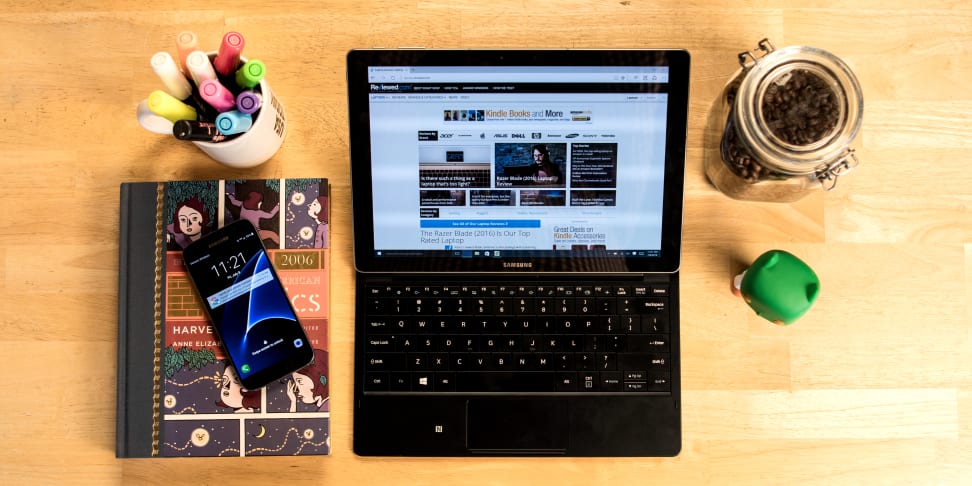Here's why you'll probably want an OLED display on your next laptop or 2-in-1
If OLED displays aren't on your radar, they probably should be
 Credit:
Reviewed.com / Kyle Looney
Credit:
Reviewed.com / Kyle Looney
Recommendations are independently chosen by Reviewed's editors. Purchases made through the links below may earn us and our publishing partners a commission.
Don't look now, but the era of LCD displays in laptops might be coming to an end. OLED (organic light-emitting diode) displays are on the fast-track to becoming the new industry standard.
In recent years, OLED has earned the right to call itself the reigning champ of television tech. The smartphone industry followed suit when Samsung began outfitting its flagship phones with OLED displays, and there's even rumors of the next iPhone getting the OLED treatment when it's released later this year.
While laptops, tablets, and 2-in-1 displays are still predominantly LCD, the industry forecast is calling for a host of OLED devices in the very near future (like the Alienware 13R3 and the upcoming Lenovo ThinkPad X1 Yoga).
So what is OLED and why should you care whether or not your next laptop features an OLED display? I'm glad you asked!
Everything looks better on an OLED display
Traditional LCD displays feature a backlight which shines through each pixel, but each pixel in an OLED display illuminates itself without the use of backlight. This might not seem like much of a difference, but it's actually a fairly big deal. Because each pixel is allowed to brighten and dim independently of one another, darker regions of the screen can get get a whole lot darker and brighter spots can get a whole lot brighter. Contrast is one of the cornerstones of picture quality, so the bigger the gulf between darkest black levels and the brightest highlights, the better.
What does that mean for your next laptop purchase? Pretty much everything—from gaming to watching movies on Netflix—will look better on an OLED display. Darker content will benefit from deeper black levels, for example, because OLED tends to render shadows with a higher level of detail. It's not just a matter of black-and-white, either—higher contrast usually means better, richer colors, too.
OLED tends to lead to longer battery life
{{ amazon name="Samsung Galaxy TabPro S", asin="B01M4OCP66", align="right" }} When it comes to laptops, tablets, and 2-in-1s, battery life is absolutely critical. This is another area where OLED has a leg-up on its LCD counterpart. Since the pixels in an OLED display can turn themselves on and off individually, a backlight isn't continuously blasting through all of them at once. OLED pixels, therefore, spend a good amount of time being either dialed down or turned off completely.
Every time you scroll through a darker-tinted website or play a particularly dark game on your OLED-equipped device, there's potentially thousands of pixels that aren't in use, which means your battery is carrying a much lighter workload.
If you're running Windows 10 on your Samsung Galaxy TabPro S, for example, you might opt for Windows's "dark" theme, which might wring a substantial amount of batter life out of your device thanks to its OLED display. OLED is still being sold at somewhat of a premium, but as the tech becomes more commonplace in TVs, smartphones, and laptops, it's sure to come down in price. If you're planning on getting a new laptop or 2-in-1 in the next year or so, you might want to pare down your options to devices that feature an OLED display—it's a great way to future-proof your purchase.
Related Video
{{ brightcove '4467071689001' }}

